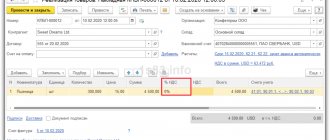Article in the Criminal Code of the Russian Federation
The theft of money is qualified in Russian criminal law under Article 158 of the Criminal Code of the Russian Federation. Theft within the framework of this article is any theft of property, that is, taking it without the knowledge and consent of the owner.
The punishment of criminals depends on the circumstances of the theft. If property is misappropriated or spent by the person who was responsible for it (for example, a store clerk), then the following sanctions may be applied to it:
- A fine of up to 120 thousand rubles.
- Correctional labor for six months.
- Forced labor for up to 2 years.
- Imprisonment or restriction of freedom for up to 2 years.
If the crime is of a group nature with a preliminary conspiracy or if the victim has suffered significant damage, Article 158 of the Criminal Code of the Russian Federation provides for more severe penalties:
- Fine up to 300 thousand (in the amount of income for 2 years).
- Compulsory work for 360 hours.
- Correctional labor for a year.
- Forced labor for up to 5 years with an additional restriction of freedom for a year.
- Imprisonment for 5 years, with an additional restriction of freedom for a year.
The third part of Article 158 of the Criminal Code of the Russian Federation qualifies the theft of money from the cash register or other types of theft committed with the use of official position. In this case, the court will apply:
- A fine in the amount of 150-500 thousand rubles (in the amount of salary for 1-3 years).
- Prohibition on holding a position and carrying out certain activities for 5 years.
- Forced labor for up to 5 years. Additionally, the court has the right to restrict freedom for one and a half years.
- Imprisonment for 6 years with an additional fine of 10 thousand (monthly salary).
Another list of aggravating circumstances of theft is indicated in Part 4 of Article 158 of the Criminal Code of the Russian Federation. This includes the commission of a crime by an organized group of persons and theft on an especially large scale. With such a qualified crime, liability is provided in the form of:
- Fine up to a million rubles or income for 3 years.
- Imprisonment for 10 years.
Features of theft of money from the cash register are associated with access to it by officials.
Documents involved in accounting for cash transactions
In order to formalize the process of cash flow, a certain package of documents is required: an incoming and outgoing cash order, as well as an advance report. The first document, as a rule, is drawn up when funds are received at the cash desk, the second is necessary for issuing cash from the cash register, and the third is used for settlements with accountable persons. The remaining documents that can be used in cash accounting are attachments to the original documents, which confirm the origin or use of funds, that is, they can be the basis for creating a primary cash document.
According to the law, for each cash register it is necessary to maintain a separate cash book - a document recording the receipt of funds in the cash register of the enterprise and showing the balance of money at the end of each cash day. New entries are added to it only on the basis of advance reports and cash orders.
Finished works on a similar topic
- Course work Accounting for cash transactions in 1C 480 rub.
- Abstract Accounting for cash transactions in 1C 270 rub.
- Test work Accounting for cash transactions in 1C 240 rub.
Receive completed work or specialist advice on your educational project Find out the cost
Theft of money from the company's cash register
Accountants usually have access to the company's cash register. If other employees of the enterprise did not have access to the cash register, then suspicion of illegal seizure of money will fall on the accounting employees.
They can commit theft:
- Having made payments for one product several times.
- In the absence of accounting reports on the use of certain amounts of money.
- Using the difference between the amounts indicated in the documents and those actually paid.
In some enterprises, other employees (sellers, directors, etc.) may also have access to the cash register. In this case, the circle of suspects in the theft increases, and the theft schemes can be quite complex.
Have a question for a lawyer? Ask now, call and get a free consultation from leading lawyers in your city. We will answer your questions quickly and try to help with your specific case.
Telephone in Moscow and the Moscow region: +7
Phone in St. Petersburg and Leningrad region: +7
Free hotline throughout Russia: 8 (800) 600-25-34
Cash book
The 1C:Accounting program implements the functionality of creating a cash book (form KO-4). The cash book in 1C 8.3 is located in the journal PKO and RKO. To open it, click on the “Cash Book” button.
In the report header, indicate the period (the default is the current day). If your program maintains records for more than one organization, it must also be indicated. In addition, if necessary, you can select a specific division for which the cash book will be generated.
For more detailed report settings, click on the “Show settings” button.
Here you can specify how the cash book will be generated and some of the settings for its design in 1C.
After you have made any changes to the settings of this report, click “Generate”.
As a result, you will receive a report with all cash movements at the cash desk, as well as balances at the beginning / end of the day and balances.
Stealing money from a store cash register
Depending on the amount stolen and the presence of qualifying signs of theft, the seller may be subject to several types of liability for stealing money from the store’s cash register:
- Disciplinary.
- Administrative.
- Criminal.
In addition to the amount of stolen money, the choice of type of liability is influenced by the number of criminals and their official status.
Disciplinary liability may be applied simultaneously with other types of punishment. It is determined by the Labor Code and internal store documents regulating the requirements for employees. Among the punishments within the framework of disciplinary liability:
- Rebuke.
- Loss of bonus.
- Dismissal.
The employment contract between the employee and the employer usually specifies violations for which one or another punishment may be applied.
Their unlawful use is the basis for an employee’s complaint to the Labor Inspectorate.
However, theft is a serious violation of the law. Therefore, it usually results in administrative or criminal liability. If the amount of stolen money does not exceed 5,000 rubles, the culprit will be held administratively liable and punished with a fine.
Exceeding this amount is grounds for applying criminal penalties under Article 158 of the Criminal Code of the Russian Federation.
The peculiarity of criminal liability for theft is that it can occur even if the amount stolen is less than 5,000 rubles. This is possible if one of the following conditions is met:
- This is not the first time the crime has been committed.
- It was committed by a group of people.
Thus, the minimum threshold of 5,000 rubles applies only to theft committed by one person for the first time.
Cash inventory in 1C 8.3 Accounting
The procedure for conducting a cash register inventory is described in the order of the Ministry of Finance of the Russian Federation No. 49 dated June 13, 1995.
Unfortunately, in the 1C 8.3 program there is no cash inventory report in the INV-15 form. This request has already been proposed to the 1C company. Perhaps someday they will finalize the program, but for now accountants have to take inventory of the cash register manually.
and a sample of filling out INV-15 can be found here.
The fastest and most effective way to solve this problem is to order processing for the formation of INV-15 from a specialist. This processing will not only save a lot of time, but will also reduce the influence of the human factor, which will avoid errors.
Connected equipment
You can connect a cash register in the program in the form Connecting and setting up equipment
from
the Administration section - Connected equipment
(Fig. 1)
.
For each cash register registered for a specific organization, you must create your own instance
of Connected Equipment
.
All fields of the reference form must be filled in sequentially. Please note that the Organization
must be filled out correctly in accordance with the data specified when registering the fiscal device.
If there is only one organization in the infobase, then the Organization
is not displayed in the
Connected equipment
.
Equipment in the program can also be linked to a warehouse.
You must select a warehouse in the field of the same name if you need to punch a check in relation to a specific taxation system. For example, when using OSNO and UTII, the program can be configured to print receipts on equipment only for OSNO, since according to Law No. 54-FZ for UTII, the obligation to use online cash registers is introduced from 07/01/2018. In other cases, there is no need to indicate the warehouse.
Rice. 1. Connected equipment
Wholesale sales
In order for the receipt to be printed with the freight train, it is necessary, first of all, to create an Invoice for the buyer
(Fig. 6).
An invoice can be created based on the Sales
.
Rice. 6. Document “Invoice to buyer”
Based on the generated Account
the Cash Receipt
document is created (Fig. 7). After posting the document using the “Print check” command, you can print the check.
If several fiscal devices are registered in the system, then when you click the Print receipt
the program will prompt you to select the device on which the receipt will be printed.
The device must be registered to the organization for which the document is being printed.
Rice. 7. “Print receipt” window
Window Print receipt
will look different depending on the version of the fiscal document format.
If format 1.0 is used, there will be no columns Attribute of calculation method
and
Attribute of calculation subject
.
The indicated columns will be if the 1.05 format is used (see Fig. 7). The indication of the payment method
depends on the ratio of the payment amount, shipment and invoice amount, full prepayment or partial.
If the payment has not been linked to the invoice previously, the prepayment amount can be entered manually in the Paid previously
.
If the cashier’s full name and TIN were not previously indicated, they can be entered for a specific transaction directly in the form (Fig. 8). This can be done for any version of the FDF.
Unlike the document Check
in the
Print Receipt
, you can select the taxation system that will be displayed in the receipt (
check Taxation
).
Rice. 8. Entering cashier details for a specific transaction
In the Print receipt
you can indicate whether you sell your own goods or act as a paying agent or intermediary (and indicate its details) (Fig. 9).
Rice. 9. Indication of payment agent details
If payment is made in several stages, then to print a receipt for additional payment upon sale, you must open an Account for the buyer
an Implementation
based on it .
After the sale, another cash receipt should be made for additional payment. The fields Cash payment
and
Paid previously
will be automatically filled in with the corresponding amounts, and
the Payment method indicator
to
Credit payment
, since the shipment has already been completed.
Thus, if all documents are generated on the basis of
, then you can see the entire structure of related documents - both shipments and payments.
In the Print receipt
There are icons for indicating e-mail and SMS (Fig. 10), which are sent to the buyer using OFD.
Rice. 10. Enter the buyer's phone number and e-mail.
Then the receipt is printed (Fig. 11).
Rice. 11. Entering information about informing the buyer
Rice. 12. Printing a receipt from the “Cash receipt” document
Receipt cash order: concept and essence
A cash receipt order is a primary document reflecting the actual receipt of cash in the organization's cash desk. In the specified configuration, access to cash receipt orders comes through the use of the “Finance” section - in the navigation panel, you must click on the “Cash receipt orders” link. After this, a window with a list of previously created documents will appear.
Figure 1. Receipt cash orders. Author24 - online exchange of student work
All created cash receipt orders in 1C are automatically moved to this list - regardless of whether they were fully executed or just saved without posting. For each individual document, all the necessary information about them is displayed: date of formation and serial number, name of the organization and cash desk, amount and other data.
Too lazy to read?
Ask a question to the experts and get an answer within 15 minutes!
Ask a Question
You can generate cash receipt orders on the basis of other documents. Customer orders or invoices can be used as supporting documents. If in the settings of the “Wholesale sales” section the parameter “Use invoices for payment to clients” is indicated, then in the PKO window there will be a tab “Invoices payable”. There you can find a complete list of invoices for payment that can be used as grounds for the formation of a PKO. If we talk about the invoices themselves, they are generated in the “Wholesale sales” section. In this case, if the “Use invoices to pay clients” checkbox is unchecked in the settings, then during activities with cash orders, instead of the “Invoices Payable” tab, the “Orders Payable” tab will appear. It is on it that the list of customer orders that must be used as grounds for creating a PQS will be displayed.
In order to create an order for invoices for payment or a customer order, you need to open the appropriate tab, select the base document with a mouse click and click the “Pay” button in the toolbar. After this, a window will appear on the screen in which you can edit the cash receipt order, the main parameters of which are filled in thanks to the base document. To complete the process, all that remains is to add edits to the document and save it.
There is a second way to form a PQS using a base document. It consists of applying the necessary menu command that appears when you click on the “Create based on” button. This menu is found in the list and edit windows of most configuration documents.
Closing a shift
There are two ways to close a shift:
- from the list form Retail sales
(if any) with the generation of a receipt (document
Retail sales report
by clicking the
Close
) - see fig. 5; - from the management of the fiscal registrar (if retail sales were not carried out).
If the organization had retail sales during the shift, then the first option is recommended, since all the necessary documents and postings will be automatically made in the program.
Please note that the shift must be closed by the cashier user whose data will be transferred to the OFD.
Rice. 5. Closing a shift
If a shift is closed from the menu item Manage fiscal registrar
, then the Retail Sales Report (RPR) is not generated. In this case, you can fill out the ORP manually.
Settings before you start
Cashier information
Before starting work, you must specify an individual - cashier for the current user of the program in the Administration
–
Set up user rights
and open a shift (section
Bank and cash desk – Fiscal device management
)
According to Law No. 54-FZ, the mandatory details of a cash receipt include the position and surname of the person who made the settlement with the buyer (client) and issued the cash receipt (clause 1 of Article 4.7).
In accordance with the order of the Federal Tax Service of Russia dated March 21, 2017 No. ММВ-7-20/ [email protected] “On approval of additional details of fiscal documents and formats of fiscal documents that are mandatory for use”, among the additional details that must be on the check is an identification number (TIN) cashier.
For more information about what should be indicated on a cash receipt, see the article “Online cash registers: what to indicate on a new cash receipt.”
This data will be displayed on the receipt if the individual’s card is filled out correctly (directory Individuals
) (Fig. 2).
Rice. 2. Individual card
Please note that for users who will generate checks, the necessary information is filled out in the individual’s card; the program should register the cashier’s hiring, indicating the position, Taxpayer Identification Number, etc.
1C:ITS How to formalize the hiring of an employee in 1C:Enterprise 8, see the reference book “Personnel records and settlements with personnel in 1C programs” in the “Personnel and remuneration” section.
Order No. [email protected] approved three versions of fiscal document formats – 1.0, 1.05 and 1.1. Format 1.0 becomes invalid as of 01/01/2019.
The TIN must be transferred to the Federal Tax Service through the fiscal data operator (FDO) if the fiscal data format (FFD) is used starting from version 1.05 and only if it is available. If the cashier does not have a TIN or it is unknown, then you don’t have to indicate it.
Item accounting accounts
The taxation system for reflection in the check is determined by the Item Accounts
(Fig. 3).
Accounting accounts can be specified both by Organization
,
Warehouse
, group or type
of Item as a whole, and
for each individual item
of the Nomenclature
.
Rice. 3. Setting up “Item Accounting”
One check can include goods sold under only one taxation system (for example, OSNO or UTII).
If you need to sell a product that is accounted for under different taxation systems, then this is done with different checks, and different subaccounts of account 90 “Sales” are used.
Starting from FFD version 1.05, the program supports reflection of transactions with goods (services) of principals. In order for the program to correctly identify consignment items, it is also necessary to set up accounting accounts for such goods using the Item Accounting
. In this case, the accounting account should be account 004. By the time the check is printed, the goods must be accepted for commission and reflected in the accounting account.
Creating a cash receipt order without depending on other documents
To do this, you need to go to the “All actions” submenu, where the next step is to select the “Create a command” item corresponding to the required type of operation. You can choose one of the following options: Receipt of DS from a bank account, Receipt of payment from the client, receipt from another cash desk, Return of DS from the supplier and Other receipt of DS. After this, the window for entering and changing the PQR is displayed on the screen, which shows information depending on the selected type of operation. If you click Insert in the list window, the editing and input window will open and at the same time, by default, the type of operation “Receipt of payment from the client” is set in the program.
Figure 2. Receipt of payment from the client. Author24 - online exchange of student work
To send a document to the printer, you must click the “Print” button. To view or edit print settings, press “Ctrl+P”.
Note 1
If we talk about other types of operations, the creation of a PKO occurs in a similar way, however, instead of some parameters, the window may contain completely different ones, the order of filling with information will be clear in any case.








